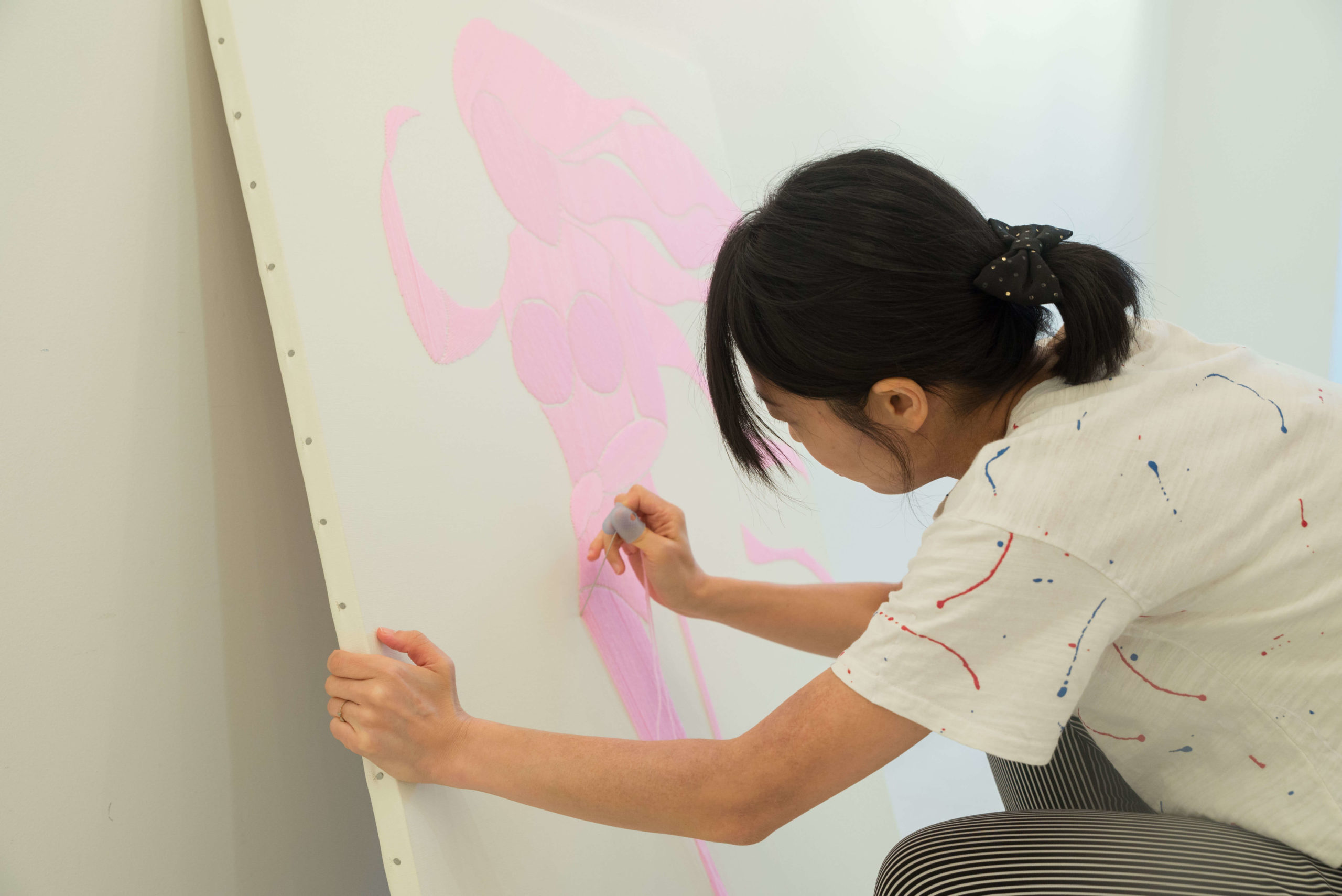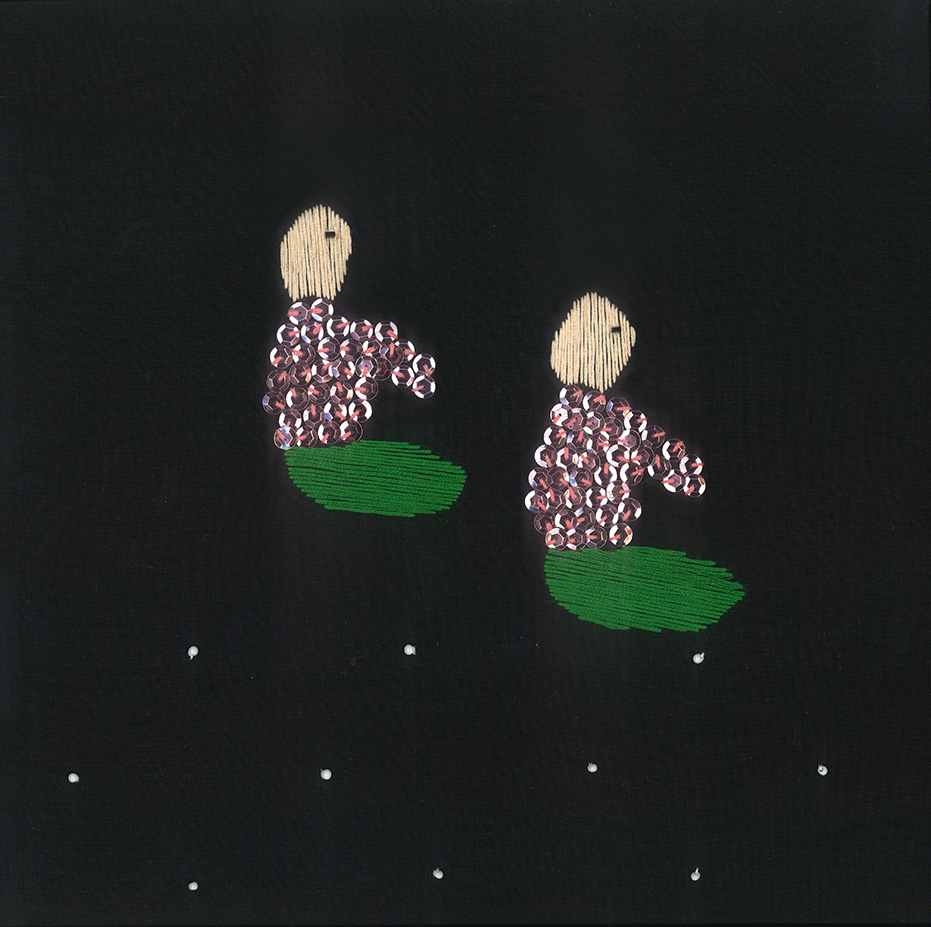
Click here to see the artists. Asami Asama, who works with an embroidery methodology, describes herself as a "vessel. She describes herself as a "vessel" who works with an embroidery methodology. She says, "It's important to faithfully translate inspiration into work," and calls her production style "shamanistic," which may be the reason why she maintains an unadulterated purity. I have the impression that many of your works are mainly embroidery. -No, I started out with drawing. Moreover, I started off as a self-taught artist. I was originally working as an illustrator, and from there I wanted to express myself, so I went into art, not client work. I moved to embroidery because of my child's illness. During that time, I was inactive, but I still wanted to create and express myself. But it was difficult to find the time and space to paint. I thought about how I could create in a way that was more sustainable, and that's how I arrived at embroidery.

Honkadori Bacchus, 33×33cm Click here for details In other words, embroidery is an artistic expression that you can do in your daily life without difficulty. Are you self-taught in embroidery? -Yes, I am. That's why I'm sometimes asked to give workshops, but to be honest, I can't teach it (laughs). I have my own rules and ways of doing things, but they are not systematized. It's just a method I arrived at as a result of searching for a way to express myself in my own living area, so it's probably different from the way people who have learned embroidery do it. In addition, it is important to me that it is a method of artistic expression. That's why I don't want to become a craftsman or a handicraftsman. As long as it is "artwork using the method of embroidery," it is essential to have an artist's perspective and stance. How do you think about this? -My work is more of an inspiration type. It may sound strange to say that I'm a shaman, but I feel as if it's just "falling" on me. A motif falls on my head, and then I have to think about how carefully I can bring it out as a work of art. That is the style of my work.

Honkadori Giuliano, 33×33cm For more information about my works, click here. So, for you, an artist stands between your inspiration and your work? -That's only my case, but yes. But that's why my own mental state is very important. Personally, I think that the work is subject to changes that are not visible, such as changes in the creator's mental state. That's why I never work when my mental state is not stable. I'm sure it will be reflected in my work. I purify myself in the morning before I start work, and it's important to be able to receive inspiration in a pure state, and to be able to turn it into work in a pure state. If my ego gets involved, my work becomes cloudy. I used to have a complex when people would say, "You're not an artist, you're a shaman," but now I don't mind. In fact, I think it's more of an identity. In my case, I'm able to create much better works than I can think of on my own. The flow of my work is like this: "I have an idea," "I sketch it," and then "I embroider it on the canvas," but I try not to be too self-conscious or strange.

Enlightenment, 33×33cm For more information about my work, click here. Lastly, is there anything that has changed or that you would like to change in the course of your work? -Basically, I don't think so. My work has an original form, so it's a matter of how carefully I can scoop it up. That's why I've always been very careful about what I do, and what I value most is my body and mind. If you're sick or mentally ill, you won't be able to make good work. It's important to be a good vessel. Click here for the artist's page